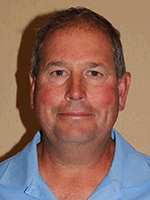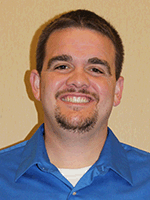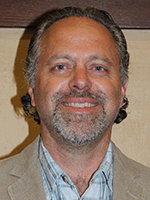
Are we keeping too many replacements? – Cal Greenfield, Hilltop Dairy, LLC, Lee Meinholz, Blue Star Dairy (Middleton), Dr. Greg Bethard, Pagel Family Businesses
For most farms, keeping every replacement heifer probably doesn’t make the most sense. However, deciding which and how many heifers to sell is different for every farm and depends on the goals you have for your operation. During a panel discussion at Vita Plus Calf Summit, three producers shared their strategies for the heifer program.
 Cal Greenfield, Hilltop Dairy, LLC
Cal Greenfield, Hilltop Dairy, LLC
Cal Greenfield owns and operates Hilltop Dairy, LLC in Markesan, Wisconsin with his brother, Rich, and nephew, Loren. The farm was established in 2001 after Loren returned home to farm and Cal and Rich combined their two farms. Today, the farm has 1,230 milking cows with the same number of replacements and a rolling herd average above 30,000 pounds. The goal at Hilltop Dairy is “great cows” and the farm focuses heavily on growing the genetic power of the herd.
Greenfield manages the calf program and explained that replacement heifers are raised in a combination of new and retrofitted facilities at three neighboring locations. He has a majority of the calves in hutches and a retrofitted barn at his home farms. The other calves are kept in hutches at the main dairy.
Plans are in the works to build a new calf barn near the parlor within a couple years. Greenfield said he likes the pen design he has in his barn because he can pull a panel between the calves after weaning and let a pair socialize before moving them to group pens and plans to use that same design for the new barn. After weaning, the calves move to superhutches and then larger pens until they are bred and enter the milking herd.
Greenfield’s top priority is to raise healthy first-calf heifers that can compete with their herdmates and stay healthy through the transition period. Because the farm focuses so heavily on genetics, the dairy has a pretty aggressive cull rate of about 12.6 percent. Paired with the fact they have been in expansion mode to this point, Hilltop Dairy, LLC keeps all of its replacements, but may change as they shift to maintaining versus growing the milking herd.
 Lee Meinholz, Blue Star Dairy (Middleton)
Lee Meinholz, Blue Star Dairy (Middleton)
Lee Meinholz farms with his family at Blue Star Dairy in Middleton, Wisconsin. The family milk about 600 Holsteins at this farm. The extended family has another farm split between two sites in DeForest and Arlington, Wisconsin. About 80 percent of the Middleton herd is registered. The freestall barn has mattresses bedded with either rice hulls or fine wood dust and fans over all the animals.
“We’re high on cow comfort and it pays for us,” Meinholz said.
Meinholz manages the calf program and the 84-pen, two-row calf barn. The stalls measure 4 feet by 8 feet, with 9-foot panels between to prevent nose-to-nose contact between calves. He tries to wean calves in groups of eight and, similar to Hilltop Dairy, calves are comingled in pairs before moving to the bigger groups. Meinholz said he will also rearrange the pairs so two boss calves are put together. In addition, to ease the transition, he keeps the calves on the same grain in the first group pen as they received in the calf barn. Eventually, as they grow, they will move into groups of 16.
For Meinholz, consistency is the key to the calf nutrition program. His goal is to have 14.5 percent solids in every batch of the pasteurized waste milk. Therefore, he tests each batch and balances it to maintain a steady solids level.
With an ultimate goal of having a fully registered herd, Meinholz said he needs to achieve high survivability amongst his calves to make the investment worth it. The farm has a cull rate of about 10 percent and almost all of those animals are sold to the sister dairy. Thus, Meinholz holds onto most all of his replacements. Although they haven’t implemented such a program yet, Meinholz said he is interested in breeding his lower-genetic cows to beef animals as an additional source of revenue.
 Dr. Greg Bethard, Pagel Family Businesses
Dr. Greg Bethard, Pagel Family Businesses
Dr. Greg Bethard has a different role in heifer program management as the chief financial officer for Pagel Family Businesses in Kewaunee, Wisconsin. In his strategic planning role, he works with Pagel’s Ponderosa Dairy, which milks about 5,300 Holstein-Jersey crossbred cows, and Dairy Dreams, which milks 2,850 Holsteins.
From his perspective, heifer inventory is a “hedge for cow flow.” He likes to have a strong heifer inventory so he can sell heifers or bring them into the milking herd depending on the markets and farm demands. He generally considers a calf and heifer herd that is the same size as the milking herd “just right.” He said 95 percent of the milking herd is too few calves and 110 percent is too many.
Bethard cited several benefits of a strong heifer inventory:
- Opportunity to cull sick or poor doers
- Ability to keep only the higher-producing cows in the herd
- Hedge for a two-year cow flow
- Prevent heifer purchases in a closed herd
As the final panelist to present, Bethard said he can see how his replacement strategy is different from the other two panelists. Because they focus on genetics, they can get more value selling their cows. In contrast, with the lower genetic cows, using them for embryo transfer, bull calf contracts, or crossing with beef may make more sense.
For all the panelists, replacement decisions start with a clear understanding of the goals for the milking herd and overall farm profitability. Once that’s established, they can explore what calf and heifer decisions will be most effective in meeting those goals.
| Category: |
Business and economics Starting Strong - Calf Care |

